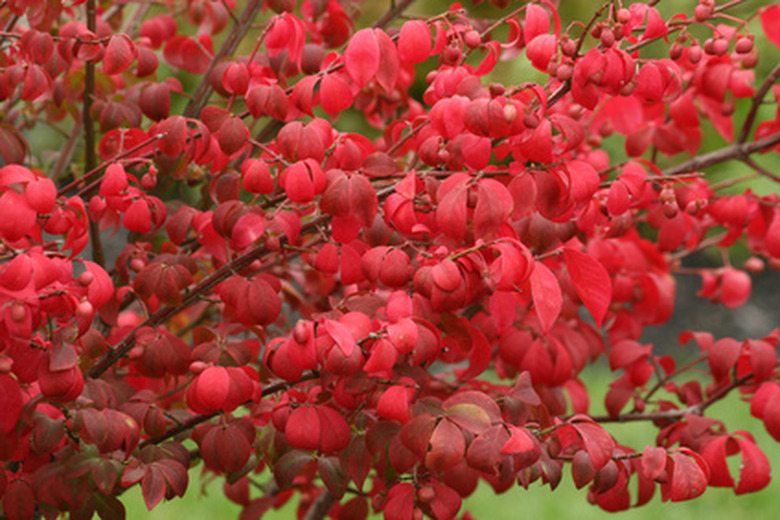How Fast Does A Burning Bush Grow?
So-named because of vibrant scarlet-red foliage in autumn, the burning bush (Euonymous alatus) becomes a dense, twiggy, upright-to-oval, large shrub that gets 15 to 20 feet tall and 10 feet wide. In many areas across North America, the burning bush is regarded as an invasive or noxious weed because its prolific seeds germinate to create thickets.
Growth Rate
Once established, burning bush adds 4 to 12 inches of new growth each year. Often the growth don't only consist of the obvious main branch lengthening, but also the addition of many small side branches from dormant buds. Genetically, dwarf selections, such as Rudy Haag, Little Moses and Pipsqueak, grow more slowly, adding 2 to 4 inches annually. Although tolerant of a wide range of soils, growth is stronger and more prominent in fertile, moist but well-drained soil and full sun.
Discrepancies
Confusing comments about burning bush growth rates abound in both digital and print literature. The wild form of burning bush tends to grow more quickly than modern cultivars that have been selected for their smaller mature sizes. However, since burning bushes sprout suckering shoots from their surface roots and their seeds germinate well, the spread of plants across an unmanaged landscape actually makes them fast-growing. Birds eat the orange-red fruits and then scatter the seeds in their droppings.
Establishment
Burning bush is often used as a hedge or foundation plant with a robust silhouette and healthy foliage that later turns deep red in autumn. After planting, irrigate both the root ball and adjacent garden soil to keep it evenly moist for the first six to 12 months. Even if the shrub is dormant with no leaves, the roots continue to grow in the cool, moist soil as long as it's not frozen. A vigorous root system sustains strong twig and leaf development.
Factors Affecting Growth
Tolerant of a wide range of soils and light exposures — from full sun to partial shade — burning bush grows at different rates depending on the environment. If two shrubs are planted and compared in different conditions, ideal growth trends arise. A dry, infertile sandy soil creates slower, less dense growth than if planted in a fertile loam or clay. The burning bush that is irrigated to keep soil evenly moist grows faster and fuller than one in soil that is seasonally dry or receives only natural rain. Gardeners may prune or shear burning bushes to shape them into hedges or uniform, rounded plants. Annual pruning in early spring before growth starts controls the size and rate of growth over time.
References
- "A-Z Encyclopedia of Garden Plants"; Christopher Brickell and H. Marc Cathey, eds.; 2004
